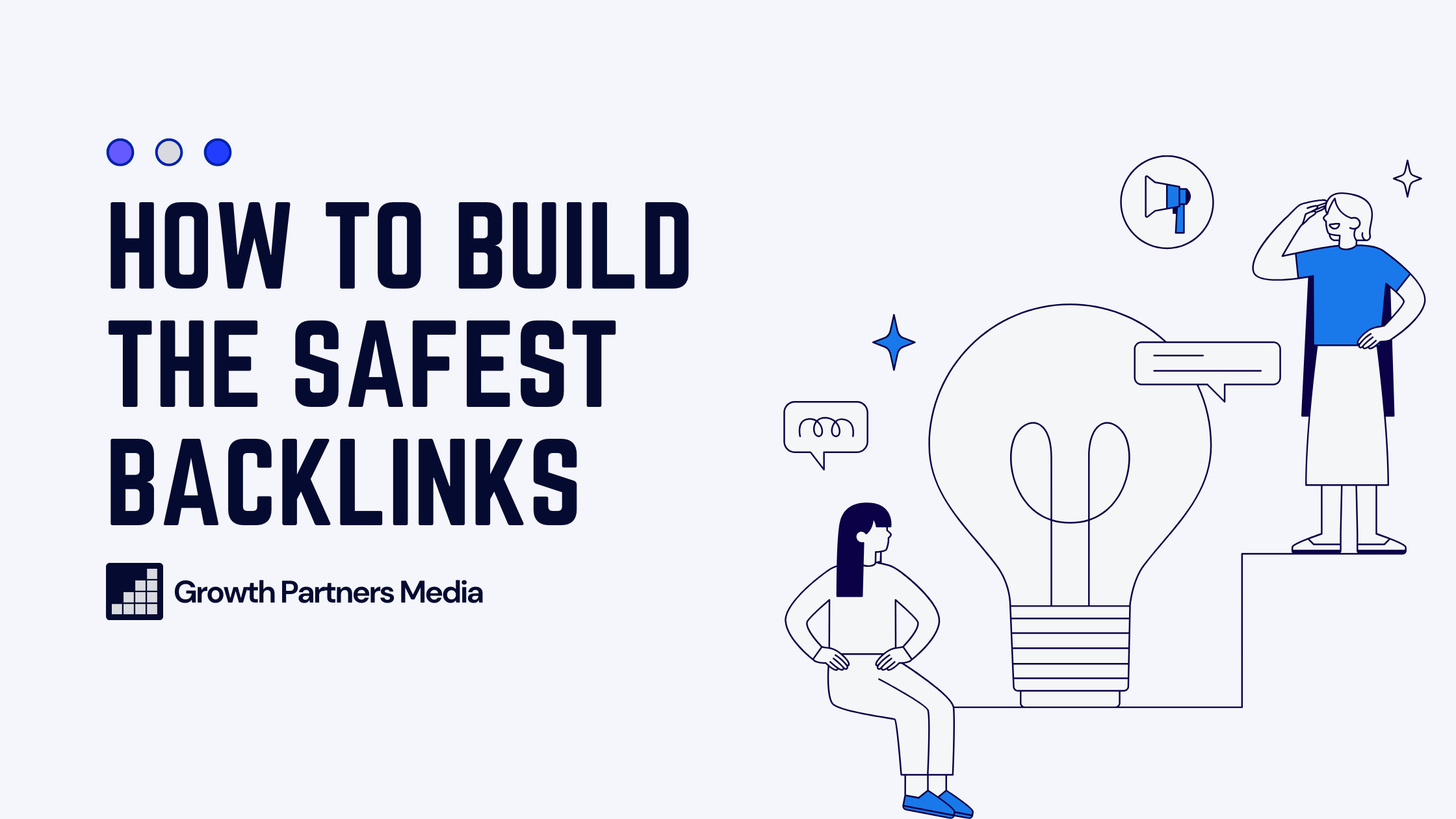Backlinks can make or break your SEO for your business.
Why?
Because not all links are created equal, and the methods you use to build them matter.
Safe backlinks are the foundation of long-term growth, but chasing the wrong kind of links can lead to penalties, lost rankings, and sleepless nights wondering what went wrong.
The world of link building isn’t black and white like 1950s TV.
As someone who’s spent the last eight years crafting sustainable SEO strategies, I’ve seen both sides of the equation.
On one side, you have white-hat techniques—ethical, sustainable, and perfectly aligned with search engine guidelines.
On the other, there’s black-hat tactics—fast, effective, but with a reputation that’s about as clean as a keyboard after a coffee spill.
Let me share a secret most aren’t willing to divulge:
Black-hat methods, when done right, can deliver jaw-dropping results.
But they’re a gamble—one that’s rarely worth the risk for companies built on trust and credibility.
In this guide, we’ll cover:
- The risks and rewards of both white-hat and black-hat techniques.
- Why safe backlinks are non-negotiable.
- Practical strategies to build high-quality links that protect your reputation and rankings.
Think of it as your roadmap to smarter, safer link building.
Let’s dive in.
Why Safe Backlinks Matter
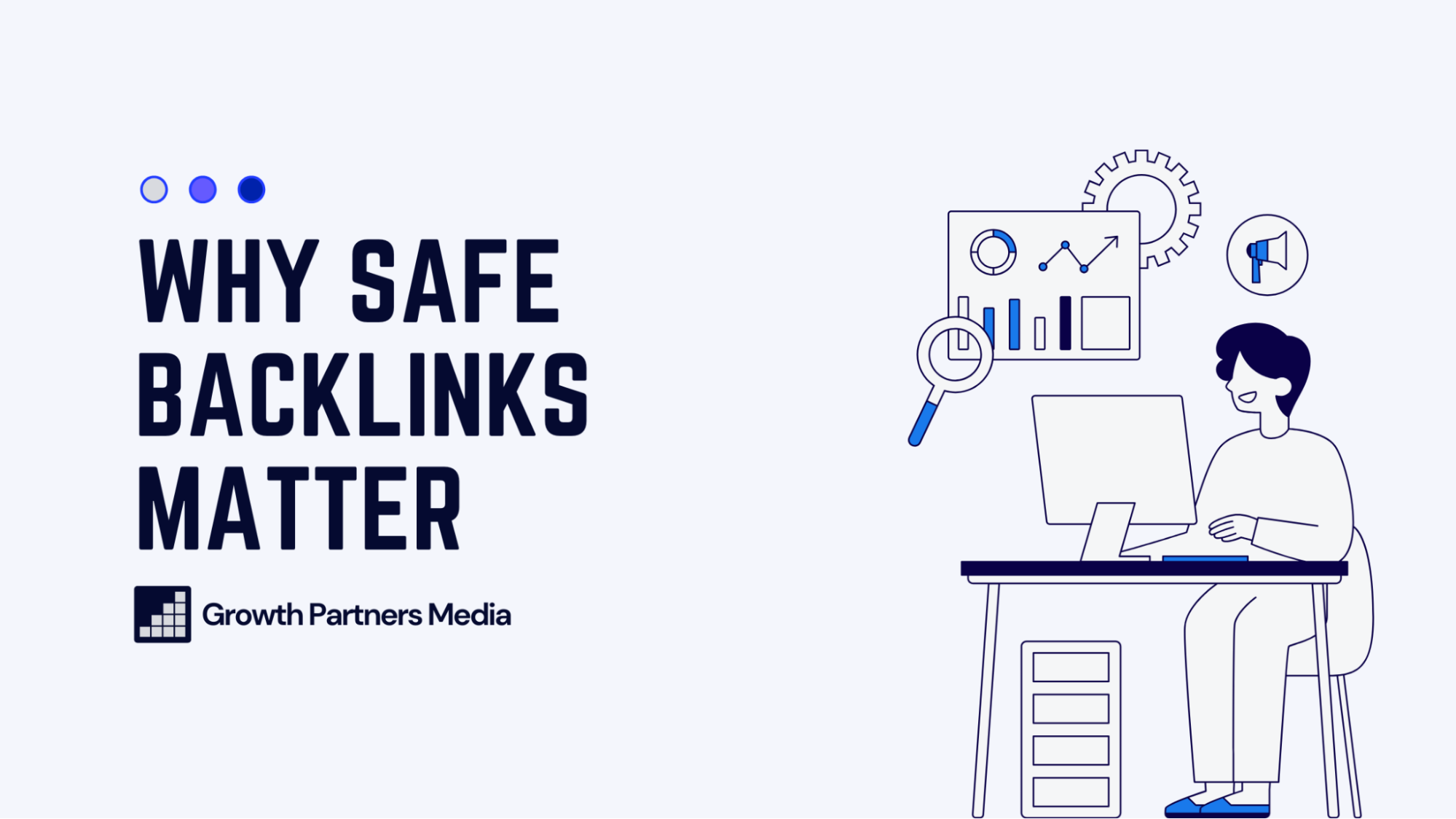
In the competitive business world, backlinks aren’t just helpful—they’re essential.
They act as digital votes of confidence, signaling to Google that your website is trustworthy, authoritative, and deserving of higher rankings.
But not all backlinks are created equal.
A “safe” backlink is one that aligns with Google’s guidelines. These links are earned through genuine value, relevant partnerships, or authoritative content.
In contrast, “risky” backlinks often come from low-quality sources or manipulative tactics, which can trigger penalties and severely harm your site’s reputation and rankings.
Google’s Emphasis on High-Quality Links
Google’s algorithms are smarter than ever. And backlinks remain one of the top three ranking factors.
Safe backlinks don’t just protect your rankings; they safeguard your brand’s reputation in a competitive market.
And let’s be honest:
When you’re starting out, the advice you hear doesn’t make it any easier.
‘Write great content.’
‘Build relationships.’
‘Manifest better rankings with positive vibes.’
Thanks for the life-changing tips, guys. 🙄
The reality is, building safe backlinks takes more than clichés. It requires strategy, effort, and a clear understanding of what works—and what doesn’t.
When done right:
They help establish long-term authority and trust with Google, but they also protect your website from the devastating effects of a penalty.
White Hat vs. Black Hat Backlink Techniques
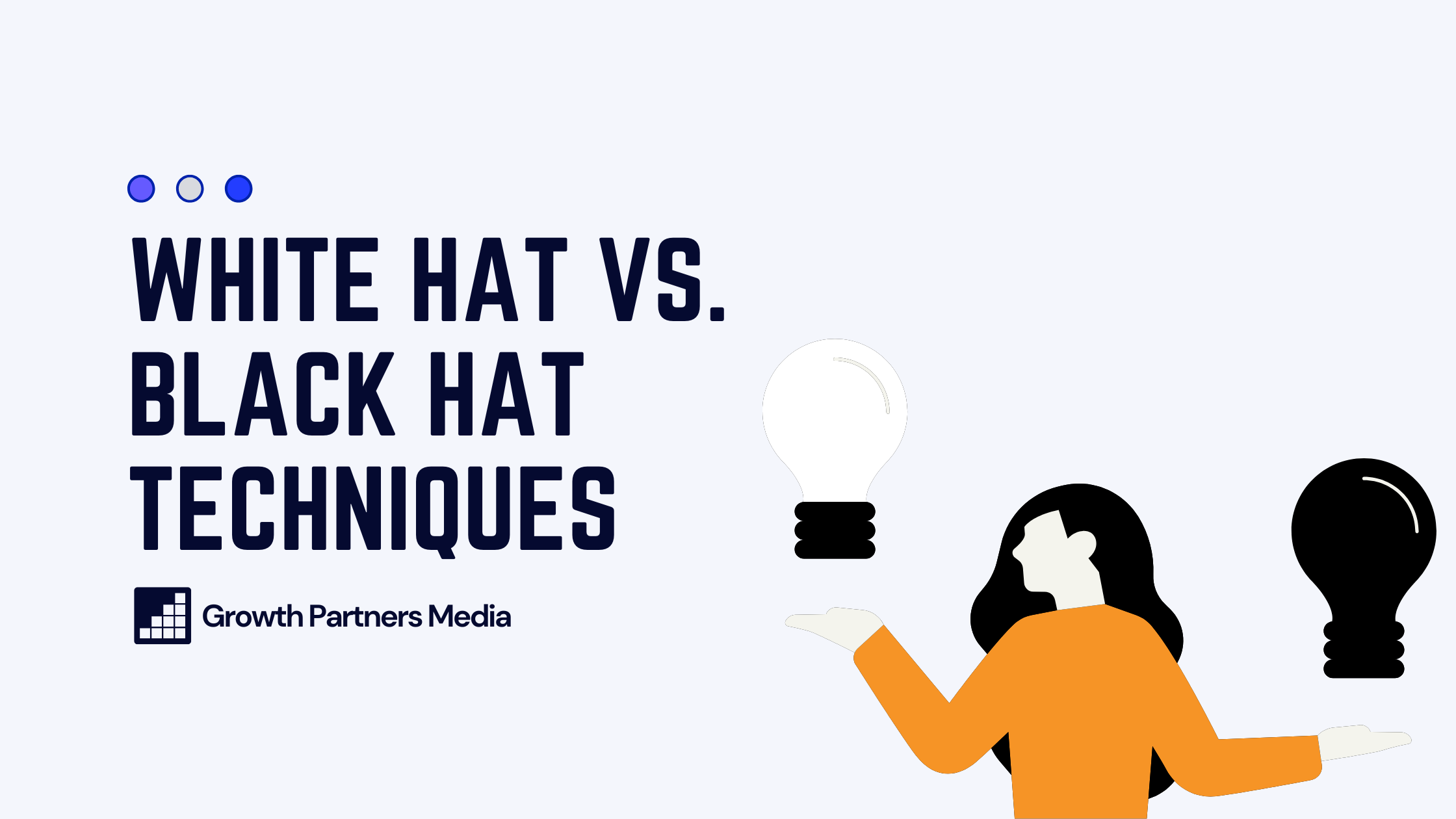
When it comes to building safe backlinks for businesses, there’s no one-size-fits-all approach.
The techniques you choose depend on your goals, resources, and risk tolerance.
But whether you lean toward white hat or black hat methods, understanding the risks and rewards of each is crucial.
Let’s break it down.
White Hat Techniques: Playing by Google’s Rules
White hat link-building methods are the gold standard for SEO.
These techniques align with Google’s guidelines and prioritize long-term growth over quick wins.
Some of the most common white hat strategies include:
- Guest Blogging: Writing high-quality, relevant content for authoritative websites in exchange for backlinks.
- Outreach Campaigns: Building relationships with industry influencers and thought leaders to earn organic backlinks.
- Partnerships: Collaborating with complementary brands or businesses to create mutually beneficial content or resources.
The benefits of white-hat techniques include:
✅ Sustainable Growth – White hat methods focus on earning natural, high-quality backlinks, leading to consistent, long-term improvements in rankings.
✅ Low Risk of Penalties – Because these techniques follow Google’s rules, there’s minimal risk of penalties that could harm your website.
✅ Builds Authority and Trust – White hat strategies often involve genuine engagement with your industry, strengthening your reputation over time.
However, white hat techniques do have one significant downside: they take time. For companies in competitive niches, the slow pace of these methods can feel like a roadblock.
Think of white hat as the tortoise in the SEO race:

Slow, steady, but much less likely to trip over its own shell on the way to the finish line!
Black Hat Techniques: The High-Risk, High-Reward Shortcut
Black hat backlink strategies operate in the gray areas (and sometimes outright ignore) Google’s guidelines. These techniques prioritize speed and impact, often using manipulative tactics to boost rankings.
Common black hat techniques:
- PBNs (Private Blog Networks): Creating a network of websites to funnel backlinks to your main site.
- Link Farms: Groups of websites that link to each other to inflate rankings artificially.
- Automated Links: Using bots or software to generate backlinks at scale.
Here’s the honest truth:
Black hat methods work, especially when done right.
Particularly PBN’s, can easily outperform equivalent white-hat methods.
In certain niches like gambling and casinos, they’re practically standard practice. And in non-English versions of Google, the concept of white hat SEO doesn’t even fully exist.
But while the rewards can be tempting, the risks are significant.
Let’s look at the upsides first:
✅ Control Over Links: With PBNs, you control the anchor text, linking page, and the entire context of your backlinks.
✅ Hidden Strategies: Tools like bot blockers can prevent competitors from reverse-engineering your methods through Ahrefs or SEMrush.
✅ Powerful Results: Techniques like homepage links from PBNs can funnel significant “link juice” to your site.
✅ Lower Risk When Done Correctly: While still risky, deep expertise can reduce the chances of detection.
Potential downsides include:
❌ High Risk of Penalties: Google penalties can wipe out your organic traffic and credibility overnight.
❌ Expensive and Time-Consuming: PBNs require regular maintenance and ongoing investment.
❌ Recovery Is Hard: If penalized, recovering your rankings is a costly, time-intensive process.
❌ Short-Term Gains: Black hat techniques may deliver quick wins, but they rarely provide sustainable growth.
Early in my SEO journey, I experimented with black-hat techniques, focusing on PBN’s and can personally confirm their strength.
I bought 47 expired domains, painstakingly revived and populated them with content. Then I pointed them to my money site. This resulted in me dominating my competitive niche for 3 years without a hitch and referring $250K in affiliate sales.
Ironically, the downfall of this project was human error, not a Google penalty.
White Hat vs. Black Hat: Key Differences at a Glance
|
Criteria |
White Hat Techniques |
Black Hat Techniques |
|
Risk Level |
Low risk of penalties |
High risk of penalties |
|
Time Investment |
Long-term commitment |
Faster results but requires consistent maintenance |
|
Cost |
Moderate, based on effort and partnerships |
Moderate, requires setup and ongoing management |
|
Sustainability |
Sustainable growth over time |
Short-term gains, potential long-term harm |
|
Industry Credibility |
Builds trust and authority |
Risks damaging your reputation |
|
Control Over Links |
Limited control, depends on external sites |
Full control over link placement and context |
The path you choose comes down to priorities:
- If you’re building a brand for the long haul, white hat techniques are the safest bet. They protect your reputation, rankings, and growth.
- If you’re operating in high-stakes, short-term niches, black hat techniques may deliver faster results—but the risks are much higher.
At Growth Partners Media, we prioritize transparency. While we don’t endorse or practice black-hat methods, we acknowledge their power when executed correctly.
The key is knowing your goals, understanding the risks, and making informed decisions.
Best Practices for Building Safe Backlinks
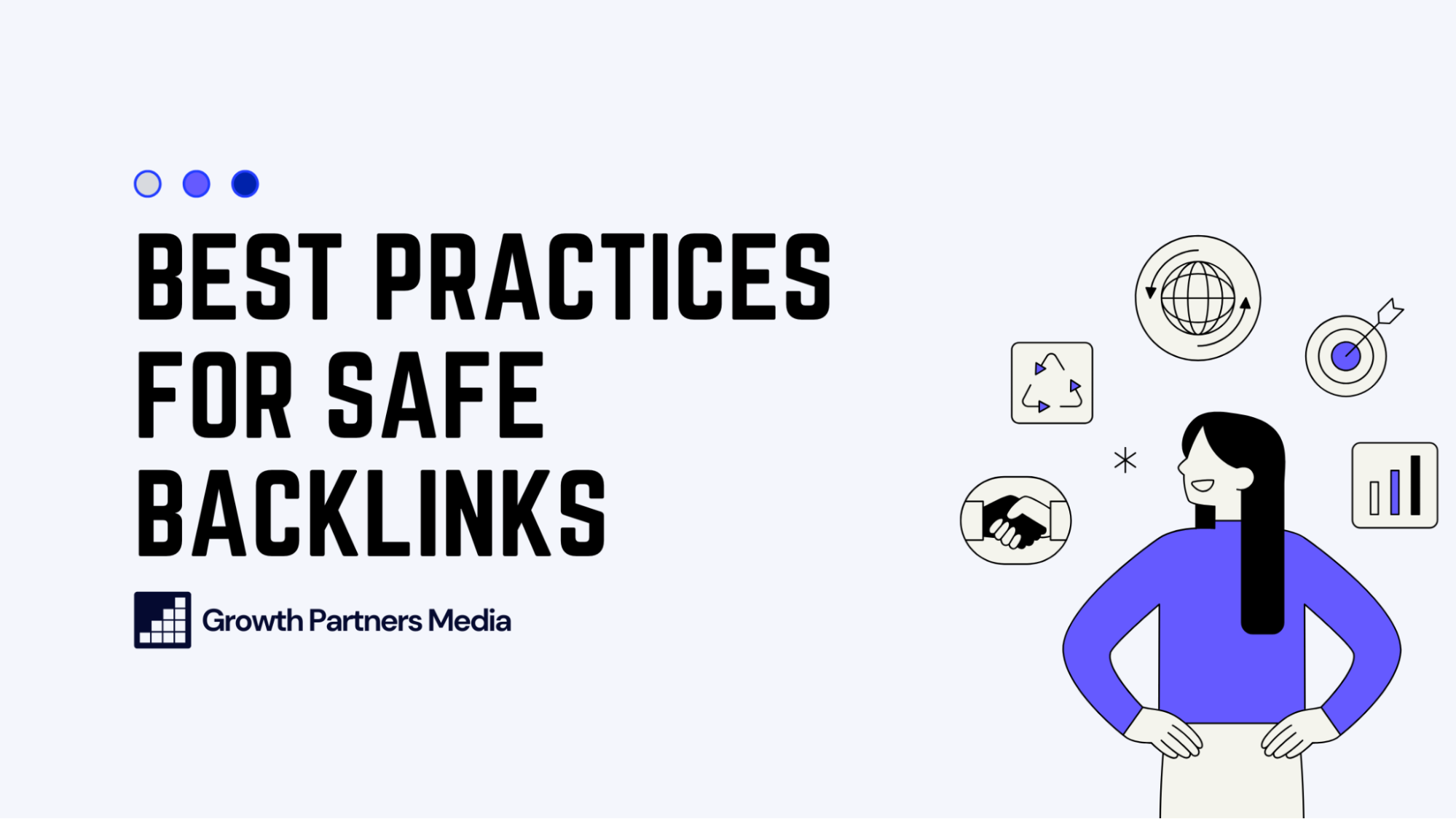
Building safe backlinks requires strategy, precision, and a focus on quality over quantity.
But where do you start? To create the best safe backlinks, you need to tap into sources that are not only effective but also align with your brand’s authority and credibility.
Here’s a roadmap to the most effective strategies for building safe backlinks tailored specifically to businesses in competitive niches.
1. Niche Guest Posting
Guest posting is a classic for a reason.
By partnering with reputable, niche-relevant websites, you can showcase your expertise while securing high-quality backlinks.
A well-written guest post doesn’t just build links—it also drives referral traffic and positions your brand as a thought leader.
These backlinks are natural, contextually relevant, and align perfectly with Google’s guidelines.
2. Niche Edits (Link Inserts)
Niche edits are a smart, efficient way to secure safe backlinks. Instead of creating new content, this strategy involves placing your link in an already published, relevant article.
Set up alerts for keywords related to your niche or industry. When new content is published, reach out to the author and pitch your resource as an enhancement to their article.
The key here? Make your pitch irresistible.
This method often yields quicker results than guest posting since the content is already live. This is the strategy we employ for our very own link insertion service.
3. Building Relationships for Links
When it comes to link building, relationships are everything. Collaborating with influencers, review sites, and industry bloggers opens the door to valuable backlink opportunities.
Strategies to try:
- 3-Way Link Swaps: A mutually beneficial exchange of links between three parties to avoid direct reciprocal linking.
- Partnership Content: Co-create content, like case studies or reports, that naturally earns links from both parties.
Approach relationships with a win-win mindset. Links built through genuine partnerships tend to have higher authority and better relevance.
4. Digital PR
Digital PR is very powerful but requires creativity and effort.
The idea is simple:
Create a linkable asset (like a data-driven report, an infographic, or a groundbreaking case study) and pitch it to journalists and media outlets.
A successful digital PR campaign can land your resource coverage across multiple high-authority sites, scoring dozens of backlinks in one go.
Not every campaign will succeed. Digital PR has the lowest success rate because it depends heavily on timing, creativity, and whether the right people pick up your pitch.
5. Niche Communities, Quora, and Reddit
If you’re not already participating in industry-focused communities and forums, you’re missing out on a goldmine for relationship building and subtle link promotion.
Platforms to Leverage:
- Industry-specific subreddits
- Quora threads related to your industry’s topics
- Niche forums where your target audience hangs out
The key?
Be authentic. Engage in conversations, share insights, and position your resources as genuinely helpful rather than spammy.
Some people dismiss forum links as low-quality, but when done right, they can drive targeted traffic and supplement your backlink profile. For instance, at Growth Partners Media, we use Herd Links to scale this strategy for our clients, combining efficiency with relevance to achieve maximum impact.
This is just the tip of the iceberg when it comes to safe backlinking strategies.
If you’re hungry for more, check out our full guide on link building strategies, where we cover every type of backlink along with examples, many of which are from our clients.
Backlink challenges
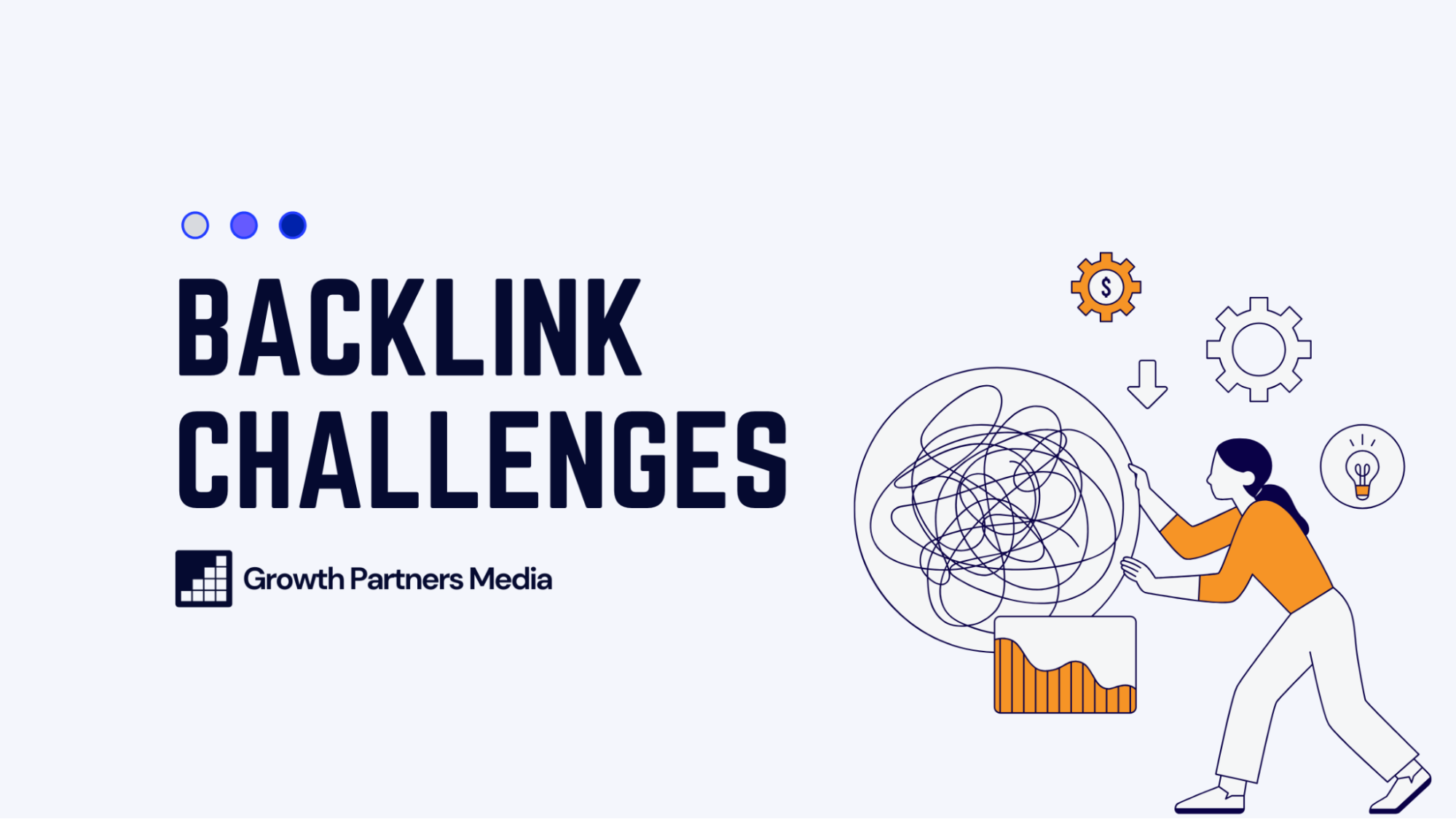
It’s easy to list out the various ways you can score links.
It’s hard to actually do the work required to land them.
I’ve had conversations with 160+ founders since GPM started back in 2020. From the notes and recorded calls, I’ve distilled the top frustrations and struggles that brands face when trying to land links:
- Spending 6 months setting up the systems required to do this at scale.
- Building relationships with hundreds of sites from scratch.
- Creating cold email campaigns that actually work.
- Finding the resources to build out the operational workflows needed.
- Finding and dedicating the resources for writing several guest posts each month.
- Finding and dedicating the resources for dealing with all the websites, ongoing conversations, admin and reporting.
- Missing out on the cream of the crop links from sites that never respond to cold email requests.
- Understanding and building your qualification criteria for what a good link looks like.
- Hiring or training the right people to perform the tasks and manage this work for your business.
The sheer scale of the undertaking is why many companies decide to outsource. However, it is critical to find the right provider if you choose to go down this path.
Avoiding Common Mistakes in Backlink Building
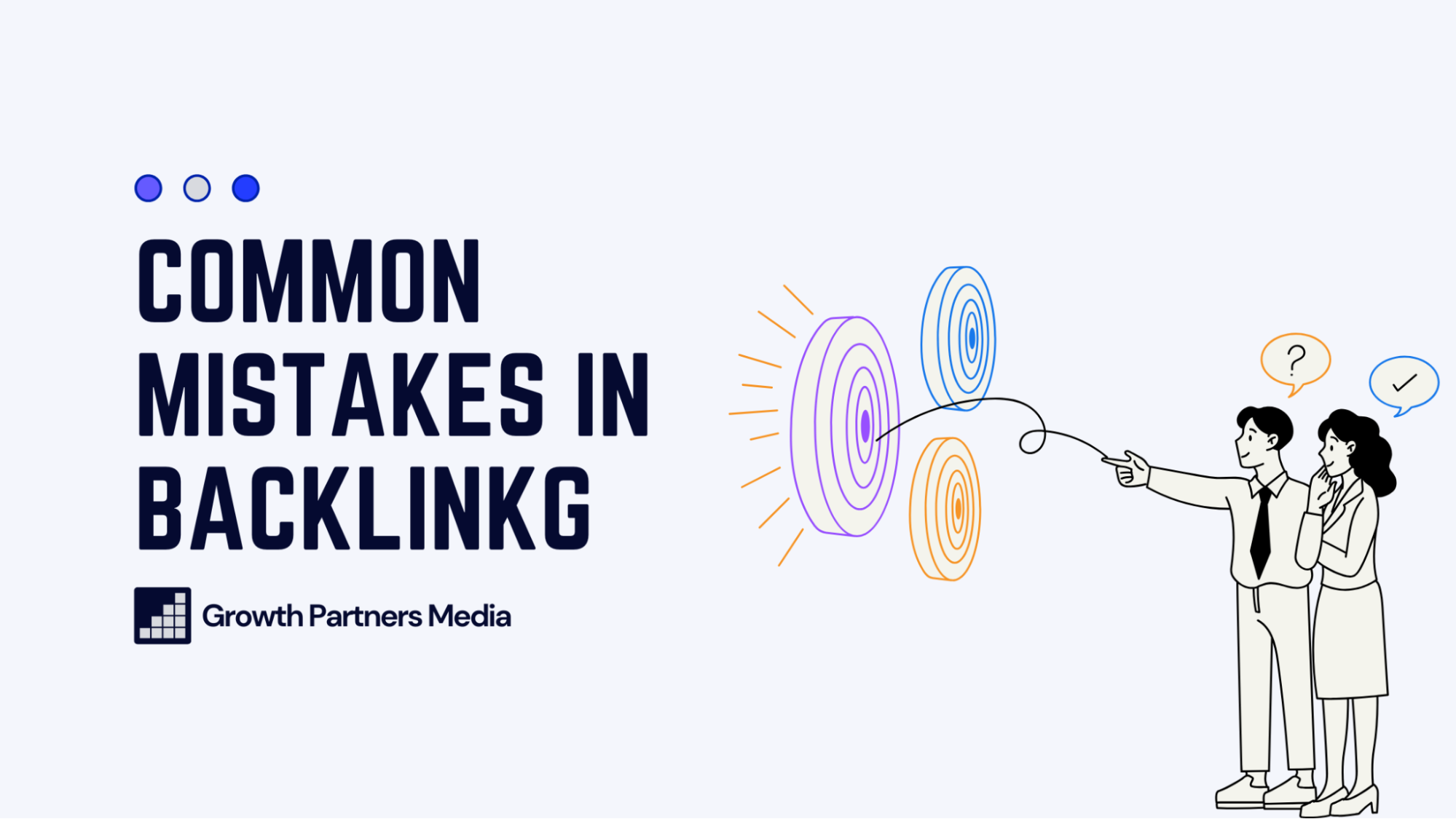
We’ve worked with companies of various shapes and sizes over the years, some have their ducks in a row and others are a hot stinking mess.
From poor content strategy to expecting results in 60 days, many are simply not ready to succeed with their SEO.
Backlink building isn’t just about getting the links—it’s about getting the right links, avoiding red flags, and ensuring your overall strategy aligns with long-term growth.
Think of it this way:
Building backlinks without a plan is like trusting a toddler with your tax return—chaotic, risky, and guaranteed to cost you in the long run.
Let’s dive into some of the common mistakes I’ve observed throughout my journey at GPM:
- Mistake 1: Using low-quality or irrelevant sites for links. Many other agencies focus on landing links from link farms, fake high DR sites or generally low quality sites that openly sell backlinks.
- Mistake 2: Focusing on link quantity over quality—highlighting why business benefits more from fewer, high-authority links.
- Mistake 3: Using the same anchor text repeatedly, which can trigger penalties.
- Mistake 4: Committing to backlinks when you don’t intend to invest for more than 6 months in your SEO. SEO is a long-term play. If you can’t spend 2-4K per month on your SEO consistently, you’re likely too early-stage and your marketing dollars are better spent elsewhere.
- Mistake 5: Not understanding the true impact of DR. The Domain Rating (DR) metric works on a logarithmic scale, so a DR80 site is in a totally different league compared to say, a DR50 one. Measuring sites purely for their DR is reductive. But it does provide a useful reference for authority. One link from a legitimate DR80 brand can have more ranking weight than 10 DR50 links. Understanding these distinctions can help you assess the value provided in your link reports and beyond.
- Mistake 6: Focusing on building links to the wrong pages. This can lead to pushing vanity metrics with more traffic and but no more conversions.
- Mistake 7: Not having a robust content strategy in place. Your content strategy is your foundation. Without this, an essential piece of the search puzzle is missing.
- Mistake 8: Not understanding and applying the power of internal links. 67% of the clients we work with have poor internal practices. This means you get less value from the links we land because the juice isn’t moving between your web pages efficiently.
Final Thoughts
Backlinks are the backbone of SEO, but success lies in building safe, high-quality links. White-hat strategies like guest posting, digital PR, and partnerships offer sustainable growth, while black-hat tactics, though powerful, carry significant risks that companies can’t afford to ignore.
Avoiding common mistakes—like relying on low-quality sites, overusing anchor text, or neglecting internal links—is critical to maximizing your efforts.
Now’s the time to evaluate your backlink profile.
Are your strategies sustainable, or are you taking risks that could jeopardize your growth?
If you’re unsure, consulting an expert could save you time, money, and headaches down the road.
At Growth Partners Media, we specialize in creating tailored, risk-free backlink strategies that deliver real results.
We’re an option you may want to consider.
- How to Get Prestigious EDU Backlinks [Time-Proof Guide] - September 23, 2025
- SEO for Manufacturing: Latest Strategies for Search & AI - September 4, 2025
- B2B SEO KPIs: Complete guide for the AI Search Era - September 9, 2025

